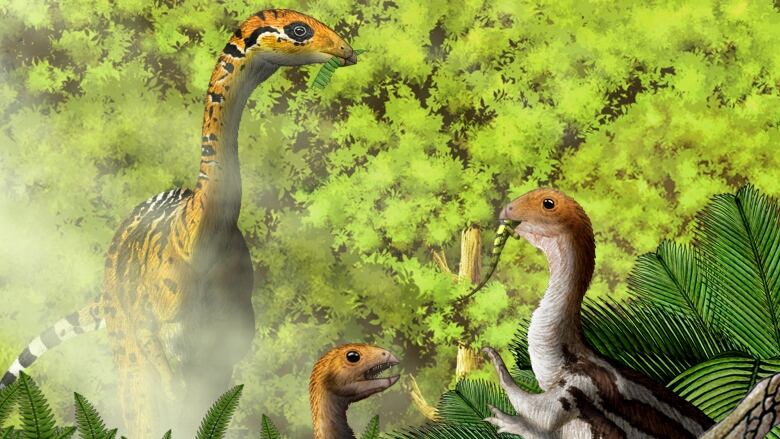Toothless dinosaur find could provide clues into evolution of bird beaks
Birds evolved from toothy, carnivorous dinosaurs

Researchers have discovered a species of dinosaur permanently lost its teeth in adolescence, the first fossil find of its kind.
The study, by a team of researchers from China and the United States, examined the skeletons of 13Limusaurus inextricabilisfrom the Xinjiang Province in China. The dinosaurs were discovered in "death traps" where they became stuck in the mud and died.
A baby skeleton in the collection had small, sharp teeth. However, the adults were all toothless.
Researchers from China first reported on the initial findings of these dinosaurs in 2001. However, due to the differences between one toothed fossil and ones without any teeth, they believed they had different species. As they began to classify various characteristics of the fossils, they realized they all belonged to the same species.
This finding led the researchers to conclude that a baby Limusaurus would have been a carnivore or even an omnivore, using itssharp teeth to tear through meat. As they grew older and lost those teeth, they became herbivoreswith no need for teeth.

The Limusaurusbelongs to a group of dinosaurs known as theropods. These two-legged, carnivorous dinosaurs include what is likely the most well-known dinosaur, the Tyrannosaurus rex. But it's also believed that today's birds evolved from the theropods. The new finding may provide a clue as to how birds went from being toothy predators to beaked creatures.
Though there were 78 identifiabledevelopmental changes between the young and adultLimusaurus, the tooth findings were the most surprising.












_(720p).jpg)


 OFFICIAL HD MUSIC VIDEO.jpg)
.jpg)



























































































